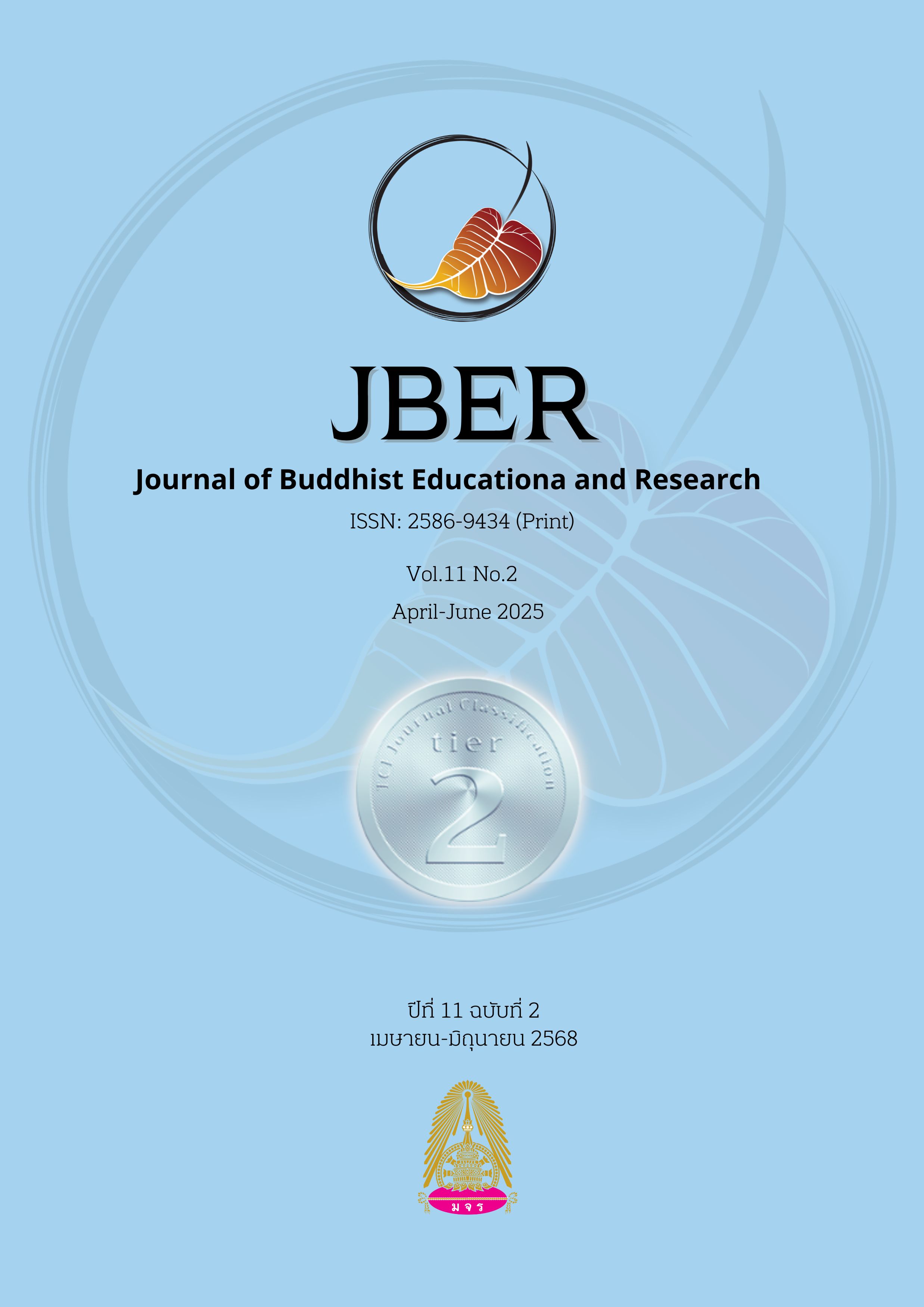Buddhist Traditions and Rituals
Keywords:
Traditions, Rituals, BuddhismAbstract
The Origin of Thai Rituals and Traditions The origin of Thai rituals and traditions refers to rituals and traditions, activities that have been passed down for a long time. The origin of Thai rituals and traditions Thai people have a clear national identity, which can be divided into 2 types. Religious rituals and traditions and customs are valuable in giving Buddhists the opportunity to make merit, to do activities together, to have a cheerful mind, and to practice according to the beliefs of society. It is based on the ideas of the majority of people in society. Royal ceremonies and traditions refer to the Royal Ploughing Ceremony, Chulalongkorn Day, Chatramongkhon Day, Makha Bucha Day, Songkran, Visakha Bucha Day, the ordination of monks, Asarnha Bucha Day, and the Buddhist Lent Festival. Royal Kathin Ceremony, Rituals and Traditions about life include the hair-cutting ceremony, the 12 commandments, the ordination ceremony, the wedding ceremony, the welcoming ceremony, the naming of children, the house-building ceremony, the spirit house setting ceremony, the Khao Thip stirring ceremony, the foundation stone laying ceremony, the age-blessing ceremony, and the offering of food to monks. Making merit at auspicious occasions, making merit at inauspicious occasions, and ceremonies and traditions related to festivals and important days in Buddhism, such as Makha Bucha Day, Atthami Bucha Day, Visakha Bucha Day, Asarnha Bucha Day, and Khao Phansa Day. Candle casting ceremony, End of Buddhist Lent ceremony, Pha Pa offering ceremony, Mahachat sermon tradition, Buddha image burial ceremony, Thai New Year merit-making tradition, Sarat tradition, New Year's Day tradition, Songkran tradition, Loi Krathong tradition, and Phra pulling tradition.
References
กรมศิลปากร. (2565). พระราชพิธีพืชมงคลจรดพระนังคัลแรกนาขวัญ: การเปลี่ยนผ่านจากอดีตสู่ปัจจุบัน. กรุงเทพมหานคร: สำนักวรรณกรรมและประวัติศาสตร์.
บุญมี แท่นแก้ว. (2547). ประเพณีและพิธีกรรมพระพุทธศาสนา. กรุงเทพมหานคร: โอเดียนสโตร์.
ปาริชาติ ลาจันนนท์, และคณะ. (2567). การแสดงในพิธีกรรมภูมิปัญญาทางวัฒนธรรมที่สะท้อนบริบททางสังคม กรณีศึกษาพิธีกรรมแห่นางแมวบ้านนางั่ว ตำบลนางั่ว อำเภอเมือง จังหวัดเพชรบูรณ์. วารสารมนุษยศาสตร์ มหาวิทยาลัยนเรศวร, 21(2), พฤษภาคม–สิงหาคม.
พงษ์ศิริ ยอดสา, และคณะ. (2565). จาตุรงคสันนิบาต (1): ที่มาของพุทธประเพณีมาฆบูชาในสังคมไทย. วารสารธรรมธารา, 8(2), กรกฎาคม–ธันวาคม.
สุปราณี สีนวลน้อย. (2552). ประเพณีและความเชื่อในการเลี้ยงเด็กช่วงขวบปีแรกของชาวมอญชุมชนหมู่บ้านบางกระดี่ เขตบางขุนเทียน กรุงเทพมหานคร (วิทยานิพนธ์ศิลปศาสตรมหาบัณฑิต, มหาวิทยาลัยสุโขทัยธรรมาธิราช).
Downloads
Published
How to Cite
License
Copyright (c) 2025 Journal of Buddhist Education and Research (JBER)

This work is licensed under a Creative Commons Attribution-NonCommercial-NoDerivatives 4.0 International License.





